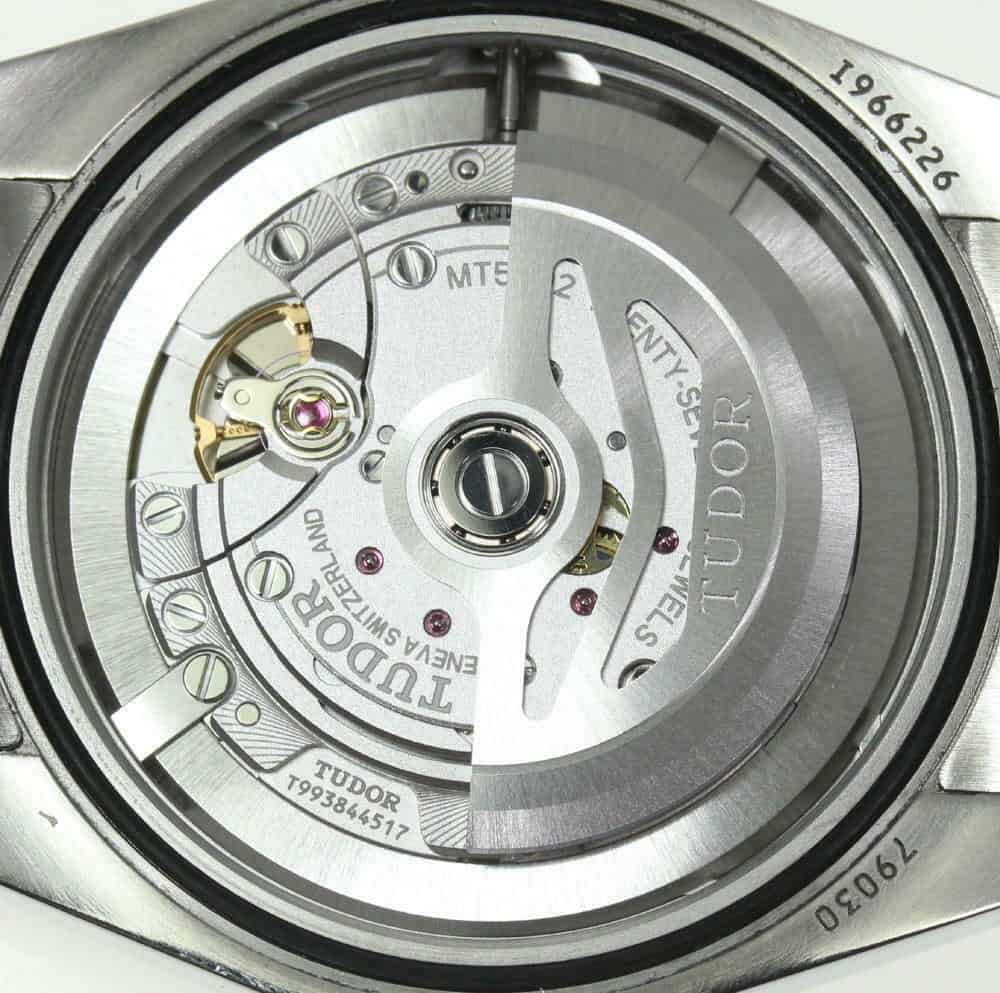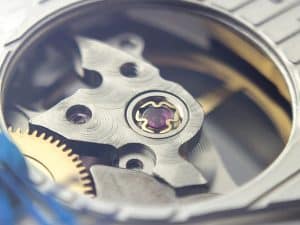Have you ever taken a closer look at your wristwatch and wondered how it works?
Well, you’re not alone, as many luxury watch owners are often fascinated by the mechanism that powers their timepieces.
For people wondering what’s powering those tiny movements, you’re welcome to read further as today’s post has everything you need to know about automatic watch movements and more.
But before we get into the nitty-gritty of today’s post, let’s tell you right away that watch movements, also called calibers, are the power uniquely designed to run the engine of a watch.
Simply put, a caliber or movement is an essential internal mechanism that allows the watch’s hands to perform their operation.
From calendars to chronographs to dual time zones and more, all these functionalities are powered by tiny watch movements fitted within watches.
That said, when it comes to affordable automatic watches, the operation is a little different, and today we want to take you through how the calibers in automatic watches work.
A brief history of automatic watch movement
Abraham Louis Perrelet, the renowned Switch watchmaker, is reportedly believed to have invented the very first automatic watch movement.
While his invention was famous in the 1770s, his movements were only able to power his watches up to 8 hours per day.
Thankfully, things got better when French inventor Hubert Sarton unveiled his automatic watch movement in 1778.
His invention brought about the massive use of automatic watch movement during that era, even as everyday wearers started switching to automatic watches.
While Sarton’s automatic watch designs were published in Paris, there were rumors that Sarton’s designs inspired Perrelet’s version of automatic watches.
By 1780, the public began buying and wearing the first automatic watches.
That said, these watches weren’t the popular ones we know today.
As a matter of fact, what they wore were pocket watches made by renowned watchmaker Abraham-Louis Breguet.
While Breguet bought some of Abraham-Louis Perrelet’s designs, he made a few changes.
Unfortunately, his designs weren’t reliable, and many European watch lovers stopped buying his watches in 1800.
By the end of WWI, advances in technology brought about a resurgence in automatic watch movements.

Understanding automatic watch movement
Even though watchmakers will create many variations of watch movements using proprietary mechanisms, virtually all watch calibers/movements fall under two major categories- mechanical or quartz watch movements.
And a simple way to determine what type of movement a watch has is to closely examine how the second hand moves inside the timepiece.
A close look at a quartz watch movement shows that it displays a tick-tick movement.
More so, the second hand is designed to move only once per second.
On the flip side, a mechanical watch movement functions almost differently.
With mechanical watch movements, the second hand is designed to move in a fluid and almost sweeping fashion to indicate the seconds passing.
Also, we want you to keep in mind that both quartz and auto-quartz watch movements are powered by batteries, which is essential for operating and running their internal electrical circuit.
Mechanical watches and their seamless operation
To fully understand mechanical watch movements, you must know that mechanical watch movements come in two categories: manual and automatic movements.
Unlike battery-powered quartz movements, mechanical calibers comprise many tiny gears and springs that power the timepiece.
Compared to watches that are battery powered, mechanical watches are a lot more expensive, and that’s because mechanical watches require a labor-intensive process to assemble.
Even though battery-powered watches are lauded for accuracy, most watch lovers and connoisseurs prefer automatic or manual watches.
To start with, mechanical watches represent hundreds of years of watchmaking craftsmanship, innovations, and precision.
Let us also add that automatic watch movements are sometimes referred to as “self-winding” watch movements.
More so, this type of movement uses the natural movements of the wearer’s wrist to power itself.
If there is anything we love about automatic watches, it is the fact that they are comfortable to wear.
And because they don’t require daily winding, they are easy to maintain and will guarantee seamless operation and accuracy at all times.
Understanding the seamless operations of automatic watches
Unlike quartz watch movement, an automatic watch movement functions almost differently.
To put things in perspective, automatic watch movements either use a metal weight or rotor to power watches.
The rotor is designed in such a way that it oscillates without interruptions within the watch.
This way, every time the wearer moves his or her wrists, the rotor spins effortlessly.
This intrinsic spinning movement is converted into energy that seamlessly winds the mainsprings, resulting in a smooth movement.
When it comes to automatic watches, the mainspring stores the power needed for the hassle-free operation of automatic watches.
Now, the big question is, do automatic watches still need winding?
Well, in some cases, yes.
While automatic watches are able to wind themselves if they are worn regularly, if you leave them sitting for some time, you’ll need to wound them to power their internal mechanism.
Frequently asked questions
How long do automatic watches last?
Automatic watches are loved because of their seamless operation.
When fully wound, automatic watches can last for days and sometimes several weeks without needing additional wounding.
With an average automatic watch, you should get between 40 to 50 hours of life.
While some automatic watches may last longer, this is pretty much the average we have come across.
Does an automatic watch stop when not in use?
Because automatic watches do not contain batteries and are charged by movement, keeping the watch idle will force it to run out of charge.
If it stays in this position for a while, it should stop working eventually.
Should you need to revive the watch again, you must wound it manually to recharge it.
Will an automatic watch run forever?
One of the brilliant things about automatic watches is that they have a pretty long lifespan.
Unlike battery-powered watches, with excellent watchmaking craftmanship, an automatic watch can almost work indefinitely, pausing only when it isn’t in use.
Even then, a single wind is all it needs to jack back to action.
- Best Luxury Automatic Mens Watches Under $500 – Top List of 2024
- Best Automatic Dive Watches Under $500 – Updated 2024
- Manual Wound Vs Self Wound Automatic Watches – Guide 2024
- Top 8 Affordable Automatic Watches – Updated Guide 2024
- Types of Watch Movements Quartz Movement vs Automatic 2024
- What is a Moon Phase Watch – How Does It Work 2024
- How Does a Smartwatch Work – Updated Guide 2024


